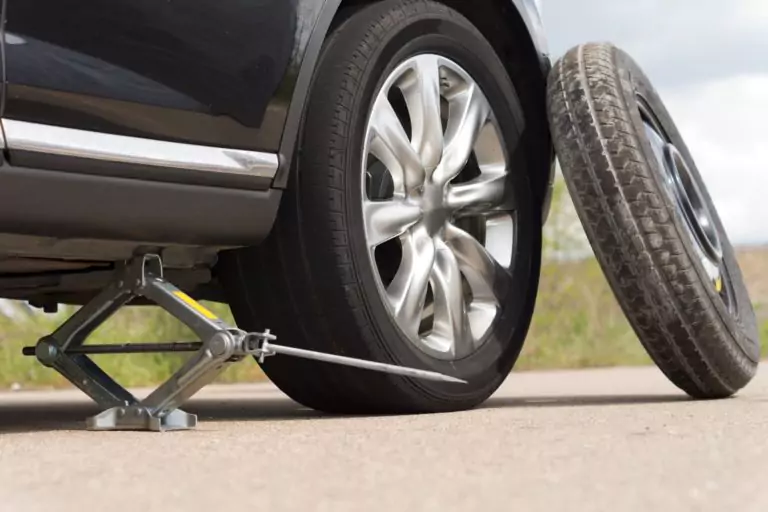How Long Can You Drive on a Spare Tire
Driving on a spare tire is something that every driver hopes to avoid, but inevitably, most will experience at least once in their driving career. Whether it's a flat tire from a nail in the road, a blowout from hitting debris, or simply discovering a flat tire when going to use the car, a spare tire is an essential component of every vehicle's equipment. However, many drivers are uncertain about how long they can safely drive on a spare tire. This article will explore the different types of spare tires, the recommended usage for each type, and provide advice on how to care for your spare tire to ensure it is ready for use when needed.

There are two main types of spare tires: full-size and compact. Full-size spare tires are similar to regular tires and can generally be used as a regular tire, although it is still recommended to replace them as soon as possible. Compact spare tires, on the other hand, are smaller and designed to be a temporary solution to get you to a tire repair shop or your destination.
The intended purpose of a spare tire is to provide a temporary solution for drivers to continue their journey in case of a flat tire or blowout. Spare tires are not designed to be used for extended periods or at high speeds. They are meant to get you safely to a tire repair shop or your destination so that you can replace the flat tire or repair it.
When it comes to limitations, compact spare tires have several. Firstly, they are not designed to be driven at high speeds. Most compact spare tires have a maximum speed rating of 50 miles per hour. Exceeding this speed can cause the spare tire to fail, potentially resulting in an accident. Secondly, compact spare tires are not meant to be used for long distances. The general recommendation is not to drive more than 50 miles on a compact spare tire. However, this can vary depending on the manufacturer's guidelines, so it is essential to consult your vehicle's owner's manual for specific information.
In addition to the limitations mentioned above, there are other factors to consider when driving on a spare tire. For example, spare tires are not designed to handle the same load as regular tires. This means that if you have a heavy load in your vehicle, you may need to lighten it to avoid putting too much strain on the spare tire. Additionally, the spare tire may not provide the same level of traction or handling as your regular tires, so it is essential to drive cautiously and avoid sudden maneuvers.
Full-size spare tires, on the other hand, can typically be used for longer distances and at higher speeds than donut spares. However, even full-size spare tires can have limitations depending on the age and condition of the tire. If your full-size spare is old or has been used for a significant amount of time, it may not be safe to drive on for long distances.
Regardless of the type of spare tire you have, there are certain precautions you should take when driving on it. First, be sure to check the tire pressure before driving on it. Spare tires can lose air over time, and driving on a tire with low pressure can be dangerous. Second, be aware that your vehicle's handling may be affected when driving on a spare tire. This is especially true for donut spare tires, which can make your car more difficult to control. Lastly, be sure to get your regular tire repaired or replaced as soon as possible. Driving on a spare tire for an extended period of time can be dangerous and is not recommended.
In addition to the limitations of driving on a spare tire, there are also dangers associated with it. One of the biggest dangers is that spare tires are more prone to blowouts than regular tires. This is because they are made with a lighter and thinner construction, which makes them less durable. Additionally, driving on a spare tire for too long can cause damage to your vehicle's suspension and alignment. This can lead to costly repairs and can also make your car less safe to drive.
To avoid the dangers and limitations of driving on a spare tire, it's important to take proper care of your regular tires. This includes regularly checking the tire pressure, rotating your tires, and replacing them when necessary. To ensure that your spare tire is ready for use when needed, it is important to check the tire pressure regularly and keep it properly inflated. Additionally, inspect the spare for any signs of damage or wear. If the spare is damaged or has been used, be sure to replace it as soon as possible.
While a spare tire is an essential component of every vehicle, it is not designed to be used for extended periods or at high speeds. Whether you have a full-size or compact spare, be sure to follow the manufacturer's guidelines for usage and keep the tire properly inflated and in good condition. By doing so, you can ensure that you are prepared for the unexpected and can safely get back on the road in the event of a flat tire.
All listed guides, data and/or calculations are for informational purposes only. Spare-Tires.com does not warrant or make any representations regarding the accuracy of or the results of the use of this information.